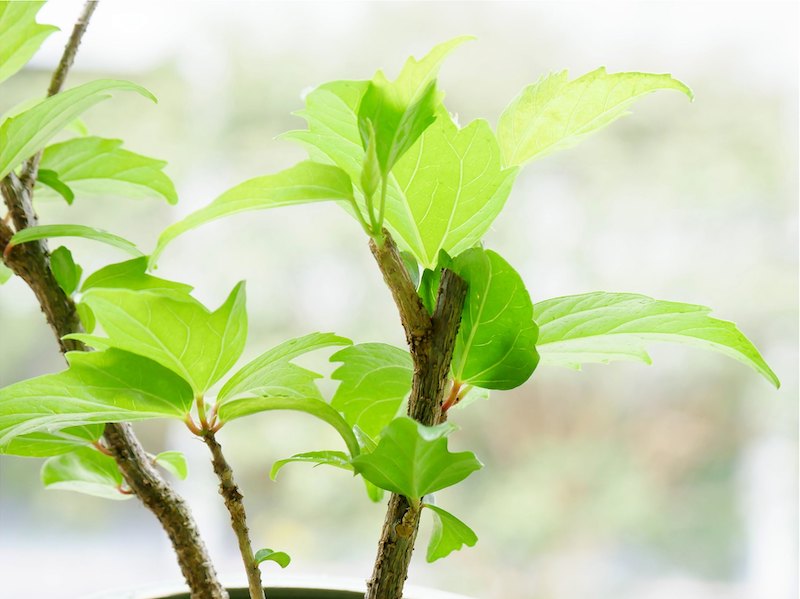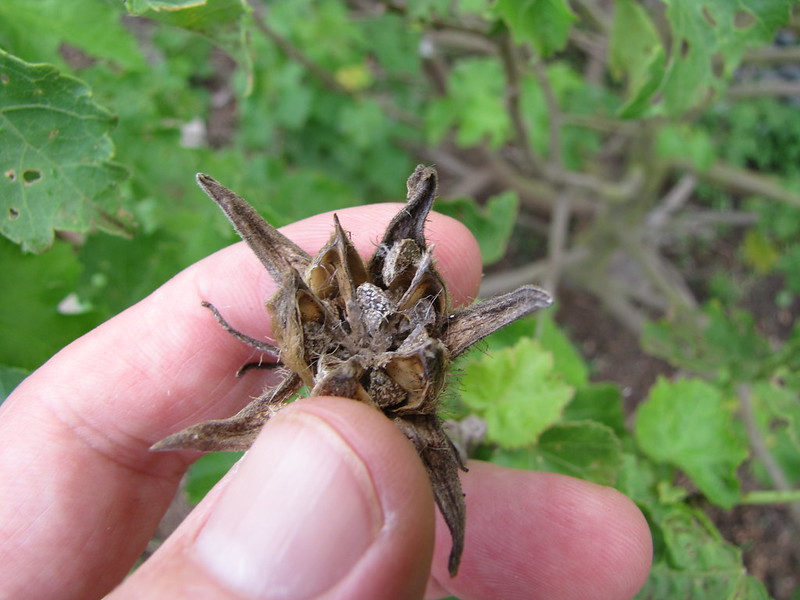Hibiscus is a flowering shrub that grows in zones 4 through 9. The large, tropical-looking flowers stand out against the woody stems and green foliage. There are two main types of hibiscus: perennial and tropical. The rose of Sharon is a popular type of hibiscus, but it’s just one variety, and there are other types of hardy or perennial hibiscus plants. Tropical hibiscus is a different type that grows in zones 10 through 12. Perennial hibiscus can be propagated through cuttings or seeds.

Methods To Propagate Hibiscus
Hibiscus cuttings should be taken from softwood or new growth. These immature branches have light green interiors. Cuttings should be at least 4 inches long and have several leaves on the upper portion. The bottom part of the cutting must have a node where the new plant will set roots. Hibiscus cuttings can be propagated in soil.
Growing hibiscus plants from seeds is an involved process that is best started indoors. Scuff the seeds using sandpaper to help them better absorb water. Follow this up by soaking the seeds in water overnight. The seeds are then ready to plant and will germinate in 3 to 5 days. Move the seedlings to a larger container and put them outdoors when the weather is warm and there is no longer a chance of frost.
What You Need To Propagate Hibiscus
To propagate hibiscus plants by stem cuttings, you will need pruning shears, a container with moist, well-drained potting mix, and clear plastic to tent the container. Growing hibiscus plants from seed requires sandpaper, a vessel to soak the seeds, containers, and potting mix. A grow light will ensure the seedlings receive adequate light, but it is not typically necessary for growing cuttings.
Best Time To Propagate Hibiscus
Hibiscus cuttings must be taken in the spring or early summer when the new growth is soft. The softwood branches will mature during the growing season and become woody. Once the branches become woody, they are considered old growth and are not ideal for propagating. Another reason to take cuttings early is to avoid trimming the plant when it is blooming.

Photo by Forest and Kim Starr, unedited, Flickr, Copyright CC BY 2.0 DEED
Steps To Propagate Hibiscus
Step 1 - Trim softwood growth in the spring or early summer to use as a cutting. The cutting should be at least 4 inches long with several leaves and a node at the bottom.
Step 2 - Using moist, well-drained soil, plant the cutting in a container. Ensure the node is about an inch below the soil.
Step 3 - Keep the soil consistently wet but not waterlogged.
Step 4 - Place the cutting in partial shade and cover with a plastic bag to create humidity and a greenhouse effect.
Step 5 - Roots should develop in about eight weeks. Transplant the rooted plant to a larger container and move it outside in the spring.
Caring For Young Hibiscus Cutting
Hibiscus cuttings are not needy but require regular care and attention to thrive. Place the cutting in partial sun and tent the container using plastic to increase the humidity. Cuttings need consistent water to maintain damp soil. Do not allow the cuttings to sit in soggy soil or standing water. The increased humidity created by the plastic tenting will keep the soil moist, so it may not be necessary to water often but continue to check the cutting to ensure it does not dry out.
 |
Author Alison Cotsonas - Published 10-20-2023 |
